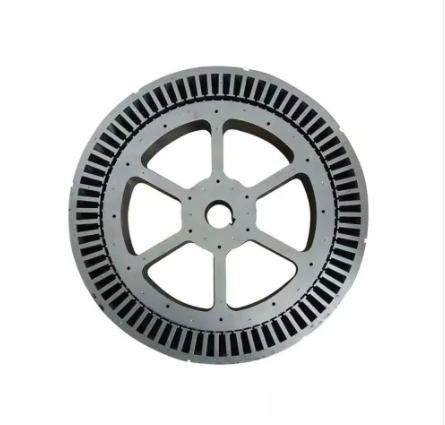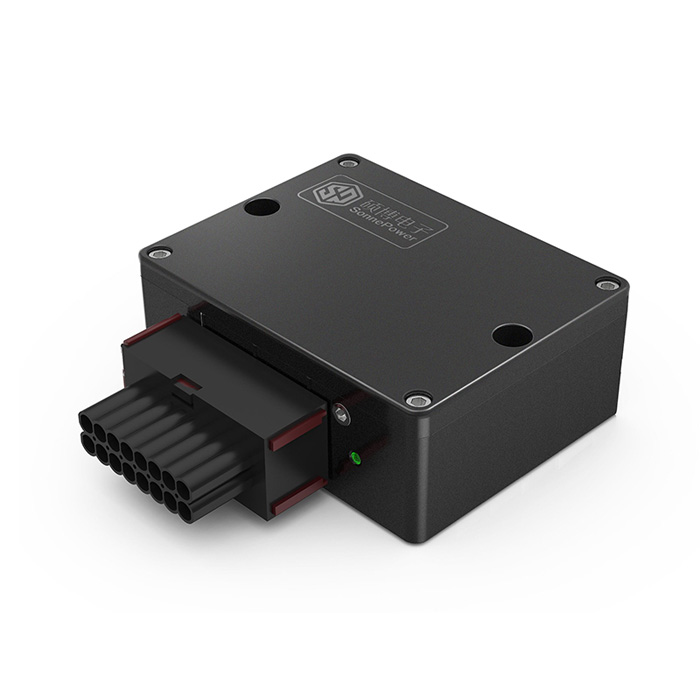What is the stator in a DC motor?
In the field of motors and machinery, the stator usually remains a mysterious and little-known component. However, it plays a key role in the functioning of a wide range of devices, from household appliances to industrial machinery. In this article, we will take an in-depth look at the stator in DC motors, its function and its significance in the field of electromechanical engineering.
Understanding DC motors
Before we explore the role of the stator, it is necessary to understand the basic structure of a DC motor. A DC (direct current) motor is a machine that converts electrical energy into mechanical energy. It works on the principle of Ampere's law and Faraday's law of electromagnetic induction, which involves the interaction of a magnetic field with an electric current.
A standard DC motor consists of two main components: the stator and the rotor. The stator is the stationary part of the motor, while the rotor is the rotating part. In this article, we will focus on the stator and its key role.
What is a stator?
The stator is essentially a fixed frame or structure within a DC motor. It acts as a housing for various components and plays a central role in generating the magnetic field required to run the motor. The stator typically consists of the following key components:
1. Stator frame: The stator frame is usually made of a strong material, such as steel or aluminium. It provides structural support and holds all the other stator components in place. 2.
2. Stator core: Within the frame, there is usually a laminated iron or steel core. This core enhances the magnetic properties of the stator and provides a path for the magnetic field to flow. It is usually made of thin laminated sheets to minimise energy loss due to eddy currents.
3. Stator Windings: Stator windings are insulated coils wound around the stator core. These windings are critical to the operation of the motor. When current passes through these coils, they generate a magnetic field. The interaction of this magnetic field with the rotor field produces the torque required to drive the motor.
4. Bearings and bushings: The stator may also contain bearings or bushings to support the rotation of the rotor, ensuring smooth and efficient operation.
Functions of DC Motor Stator
The function of the stator in a DC motor is multifaceted and is fundamental to the operation of the motor. The following are the main functions of the stator:
1. Generation of magnetic field: One of the main functions of the stator is to generate a fixed magnetic field. This field is generated when current is supplied to the stator windings. The magnetic field generated by the stator interacts with the magnetic field of the rotor and causes the rotor to move. The direction of the current in the stator winding determines the direction of rotation of the motor.
2. Magnetic polarity control: The stator can precisely control the polarity and strength of the magnetic field. By changing the current in the stator winding, the strength of the magnetic field can be adjusted, thus affecting the speed and torque of the motor.
3. Stabilising the rotor: The fixed position of the stator provides stability to the rotor, ensuring that it rotates on a consistent axis. This stability is critical to the efficient and smooth operation of the motor.
4. Mechanical Support: The stator frame acts as a structural support for the entire motor assembly, ensuring that all components are properly aligned and secured in place.
5. Control of motor direction: In some DC motors, the direction of rotation can be reversed by changing the polarity of the stator magnetic field. This is critical for applications where the motor needs to run in both clockwise and anti-clockwise directions.
Why use a bellows valve?
What is the purpose of the ball valve?
Unveiling Top Drilling Equipment Brands in USA
The Ultimate Guide to Rubber Brake Cups
Unlocking the Secrets of Ball Bearing Deep Groove: Enhanced Performance & Durability Explained
Which black rubber U-channel offers the best price for purchase stage?
What is manipulator in welding?
Types of DC motor stators
DC motors can be classified into different types depending on how the stator is arranged. The most common types include:
1. Excitation wound stator: in this type of stator, the excitation windings are wound around the stator frame. The rotor is in turn located within the excitation winding. The excitation stator is usually used in large DC motors to provide excellent speed and torque control.
2. Permanent Magnet Stator: In a permanent magnet DC motor, permanent magnets are used for the stator instead of an excitation winding. These magnets produce a fixed magnetic field with which the rotor with windings interacts. Permanent magnet stators are usually used in smaller DC motors and are known for their simplicity and efficiency.
3. Series-wound stator: The excitation winding of a series-wound stator is connected in series with the armature winding (rotor). This configuration produces high torque at low speeds, making the series-wound stator suitable for applications such as electric vehicles and industrial machinery.
4. Parallel Excitation Stator: The excitation winding of the parallel excitation stator is connected in parallel with the armature winding. This arrangement allows for more precise speed control and is often used in applications where maintaining a constant speed is critical.
DC motor with stator applications
DC motors with stators are used in a variety of industries and technologies for their reliability and precise control of speed and torque. Some common applications include:
1. Electric vehicles: DC motors are used in electric cars, bicycles and scooters because of their ability to provide high torque at low speeds, making them ideal for propulsion.
2. Industrial machinery: DC motors are used in conveyor systems, material handling equipment and manufacturing machinery that require precise control of motor speed and torque.
3. Household appliances: Many household appliances, such as blenders, washing machines and hoovers, use DC motors to improve efficiency and reliability.
4. Robotics: DC motors are widely used in robotic systems for their ability to provide precise motion control.
5. Aerospace: DC motors are used in aircraft systems for applications such as flap control and landing gear drive.
6. medical equipment: DC motors are used in medical equipment, including diagnostic equipment and infusion pumps, due to their compact size and precise control capabilities.
The future of DC motors and stators
The role of the stator in DC motors is likely to become more important as technology advances and the demand for energy-efficient and high-performance motors grows. Innovations in materials such as high-efficiency magnetic alloys and advances in control systems are expected to lead to more efficient and compact DC motors. In addition, the integration of DC motors in renewable energy systems such as wind turbines and solar trackers will further advance stator technology.
In conclusion, the stator in DC motors may be a less recognised component, but its importance in the operation of these motors cannot be underestimated. Its role in generating and controlling the magnetic field is critical in converting electrical energy into mechanical motion. As technology continues to advance, the functionality and efficiency of the stator will play a vital role in shaping the future of electromechanical engineering and the wide range of applications in our daily lives.
We are Epoxy Coating Rotor Manufacturer, if you need, please contact us.
Ultimate Kit: Essential Copper Crush Washer Set
What is the function of the Pilot Operated Sequence Valve?
What happens when oil control valve goes bad?
Which investment casting method offers the best precision for watch parts?
How are freeze plugs installed?
What are the advantages of buying cylindrical roller bearing PDFs for a successful B2B purchase?
A Complete Guide To Aluminum Extrusion
294
0
0
Related Articles
-
What are the top 5 reasons to choose Edge Trim for your purchase?
What are the top 5 reasons to choose Edge Trim for your purchase?
187
0
0
-
198
0
0
-
80
0
0
-
106
0
0
-
77
0
0
-
101
0
0
-
Which industries will benefit most from HardFace Technologies?
Which Industries Will Benefit Most from HardFace Technologies?
241
0
0
-
76
0
0










Comments
All Comments (0)